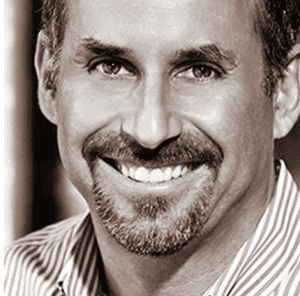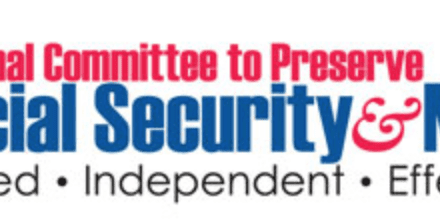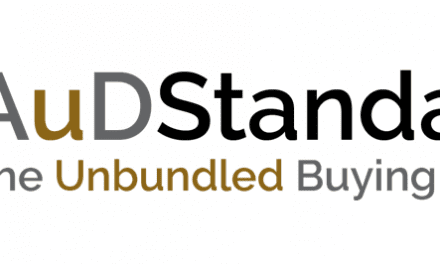Industry Insider | December 2019 Hearing Review
Sponsored Content
Over the past 5-10 years, the audiology market has become more competitive, and hearing care practices are increasingly dependent on relationships with local healthcare practitioners to drive their business. This new reality makes it especially critical for practices to establish strong relationships with these local physicians and healthcare providers. In particular, nurturing physician relationships improves your chances for acquiring new patients, enhancing patient care, and increasing business profits. The Hearing Review recently sat down with Sycle Co-founder and CEO Ridge Sampson to talk about the changing audiology market, and how Sycle is helping its customers build strong relationships with their local physician community through its physician reporting tool.

HR: It’s great to sit down with you, Ridge. Can you share your thoughts on the changing audiology market—particularly when it comes to managed care and patient referrals?
Ridge Sampson: Thank you. It’s good to be here. The number one thing audiologists tell us is they want more patients coming in the front door. However, there is a struggle to acquire new patients and maintain revenue.
Part of that comes from third-party payers that are reimbursing hearing care providers only $350 or $500 an ear to fit a hearing aid—so there aren’t the same margins compared to private-pay hearing aid dispensing. If professionals were to use 100% third-party payers, most would find it difficult to stay in business. We’re seeing more and more of our customers having third-party payers for 10%-40% of their business. And this varies greatly depending on what part of the country you’re in. So, the reality is it’s becoming harder for audiologists and hearing aid specialists, and we’re even seeing some of our customers shutting their doors.
The other part of it is, when hearing care professionals go “in-market” and acquire private-pay patients using traditional forms of marketing, such as direct mail and print, their cost of acquiring a new patient is often close to $900. A lot of people might think, “I don’t spend that much,” but if you take your marketing budget and divide it only by your new patients in your practice—remember, we’re not talking about all of your returning patients as well as those who came in but didn’t purchase a hearing aid—then that “new patient acquisition cost” starts to really spike.
HR: What are some of the best ways dispensing professionals can adapt and differentiate themselves in this crowded market?
Sampson: The first is to buff up your patient referral system. As the cost of getting a new patient increases, so does the importance of being efficient and utilizing your current customers for referrals, in addition to your conventional marketing efforts that drive new private-pay patients into your practice.
The second is to focus on physician referrals, which successful practices are relying on more and more. When referrals come from an ENT or a family doctor, it’s clear to the patients that they have a hearing loss and they’re much more predisposed to purchase a hearing aid. And once they’ve become convinced of your value, they will in turn tell their friends about how happy they are that their doctor recommended your services.
For these reasons, we have spent a lot of time and thought in designing and developing a robust physician reporting tool that is completely customizable and easy to use. I’ll admit that, initially, we didn’t really think that the physician reporting tool needed to be customized. We thought we could build out a standard report that everyone could use.
However, our customers wanted customizability and versatility—and there are good reasons for this. Some wanted to have their recommendations at the top of the report and the charts below it. Others wanted their charts at the top of the report and their recommendations at the bottom. Some voiced they wanted reports to go over two pages, while a number wanted just one page.
These might seem like small things, but they’re definitely not. Each practice has specific needs relative to the physicians they serve. We came around to understand how important this can be, so we built a highly customizable reporting tool. The reports are perfect for family doctors who recommend patients and/or for ENTs where they might be referring both ways. Plus, as an added bonus, these reports can be customized for the patient, so they have a record of their visit with the audiologist or hearing aid specialist.
HR: Let’s talk about the importance of a strong physician-provider relationship in hearing care and how it affects a practice and improves patient care. Why are they important, especially now?
Sampson: On some level, audiologists and hearing aid specialists may have a hesitance to connect with ENTs, but they need to be able to refer to them. It’s important for ENTs, audiologists, and other hearing care providers to have strong relationships and excellent communications. The more they can move information back and forth in a clear and concise way, the better things are for everybody all around. For example, we’ve seen that a strong physician-audiologist relationship can reap many benefits:
- Improved patient health through early identification and a hearing care provider’s referral;
- In increase in the number of referrals through networking events and conferences, and
- More business opportunities for practices—collaboration and trust can lead to more efficient testing, happier patients, better outcomes, an expanded customer base, and increased revenue.
HR: How do you see Sycle playing a role in helping facilitate these relationships?
Sampson: Sycle’s role is to provide our customers with a robust and easy-to-use physician reporting tool that they can utilize as part of their daily practice management. In fact, our intention is that they will use it all the time seamlessly. The more they use it, the better the relationship they will have with their referring physicians and ENTs.
HR: What should an owner or manager of a hearing care business look for when they’re evaluating physician reporting software?
Sampson: One important feature is to have NOAH integration so that the report can import metrics directly into it. It’s also good to have a report that can be customized to meet a physician’s or audiologist’s specific needs or preferences. In other words, it’s important to have a high level of customization coupled with the ability to import data automatically, so it’s easy to build a comprehensive physician report quickly. If it’s seamless to build and doesn’t take much time, it will be readily used.
HR: So, you have these reports already built in standard templates that can then be further customized?
Sampson: Yes, we have templates built for ENTs, for MDs, as well as for the actual patient so they can go home with a report in hand. We also have templates for different types of hearing loss. With a variety to choose from, all the hearing care professional has to do is decide which one to use based on their role and needs. The data and recommendations are then generated automatically in the report. The best part is 90% of the report is already built out in the templates.
HR: Cochlear purchased Sycle in 2017 and you’ve recently partnered to form the Continuum of Care Initiative. Certainly, physician referrals play a large part in the success of cochlear implant recipients. Can you talk to us a bit about what Sycle and Cochlear have built together?
Sampson: What Sycle and Cochlear have is a way to identify patients who are potential cochlear implant candidates. These are patients who have severe or profound loss. We have done a lot of research with one of our big customers with hundreds and hundreds of locations and found that patients with severe-to-profound loss had a 243% increase in exchanges and a 34% increase in returns. Patients with a very high level of hearing loss are coming back time and time again and using a lot of clinical time with the audiologist or provider—and they’re often not purchasing. In fact, we’re seeing that the purchase level goes down and the time consumption goes up with many of these patients, leading to increased frustration on the patient’s part.
With the Cochlear Provider Network—a network of ENTs who work with audiologists—an audiologist can refer a patient to an ENT who provides cochlear implants. The agreement is that the ENT will perform the surgery, install the implant, then send the patient back to the patient’s original audiologist or dispenser. About 70% of the time those patients are bimodal, so they have an implant and a hearing aid.
The other byproduct here, according to recent studies, is patient satisfaction goes up about 500%. Now you’ve got really happy customers. Though an audiologist may have fitted their patient with one hearing aid rather than two, it’s important to look at the big picture: happy customers stick around and share their positive experiences with their friends and family, which in turn helps increase patient referrals and expand the customer base. It’s also a great way for practices to differentiate themselves against their competition.
Correspondence an be addressed to HR or [email protected]





